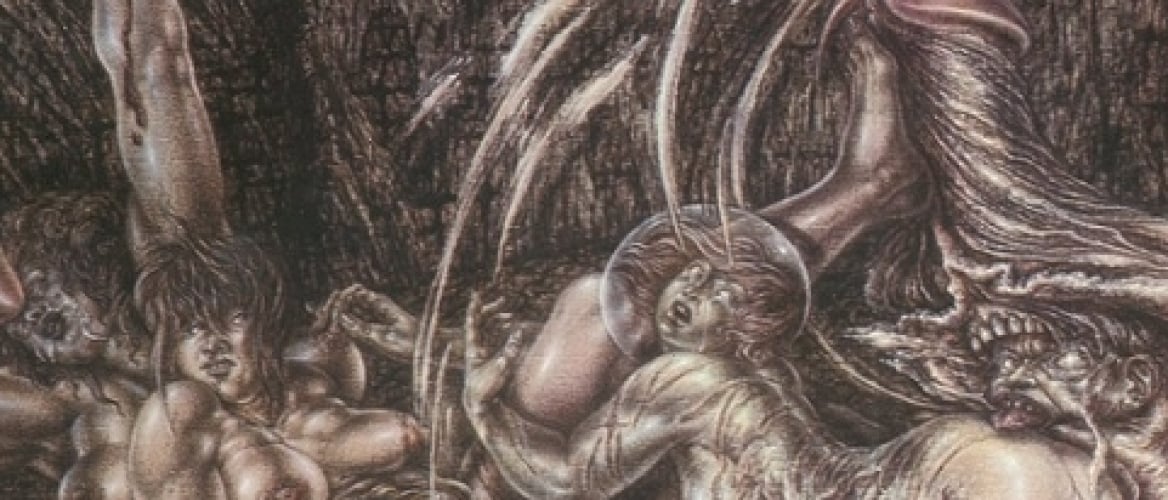
Dancer and painter Sibylle Ruppert (1942-2011) was born when bombs were falling during the first massive bombing of Frankfurt. In search of safety, her parents fled Frankfurt to live in the countryside. After the war, her family was taken in by an aristocratic family. Sibylle’s father was a graphic designer and she spent hours watching him draw.
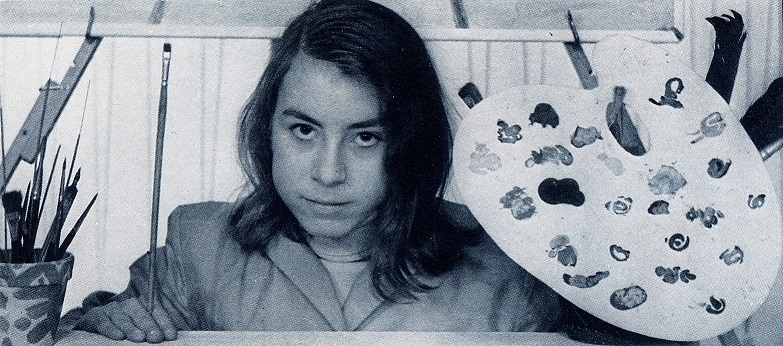
Fig.1.
Ballet
At the age of six, she introduced her first drawing to the family, a drawing of a fist hitting a face. At first, forced to practice ballet to lose weight, Sibylle applied herself to the art of dance with the same zeal she devoted to her drawings. Barred from participating in classical ballet because she was too tall, she joined Georges Reich’s dance company. Divided between ballet and drawing, while on tour in the United States, Sibylle opts for drawing, leaves Reich’s company and returns to Frankfurt, where she will work as a drawing teacher at Kunstschule Westend, an art school founded by her father.
Prisons and Psychiatric Hospitals
In 1976, she moved to Paris, where she exhibited her drawings inspired by the works of Sade, Lautréamont and Georges Bataille. She even exhibited her work at Bijan Aalam Gallery; however, when it closed in 1982, Sibylle returned to teaching drawing and painting in prisons and psychiatric hospitals.
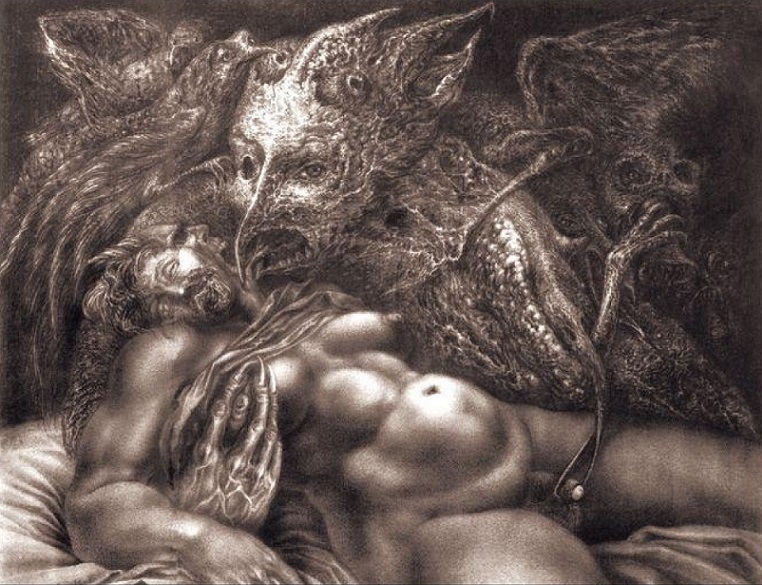
Fig.2. ‘My Sister, My Wife‘ (1975)
HR Giger
A friend of HR Giger, Sibylle Ruppert has had her work compared to that of the Swiss artist. Such a comparison is perhaps superficial and hasty, since the creatures that inhabit the images conceived by Sibylle (Fig.2) seem to relate much more to the demons that inhabited the imagery of Germanic lands in the Middle Ages (Fig.3) than to the images of humans and machines connected by biomechanical relationships in the work of HR Giger (Fig.4).
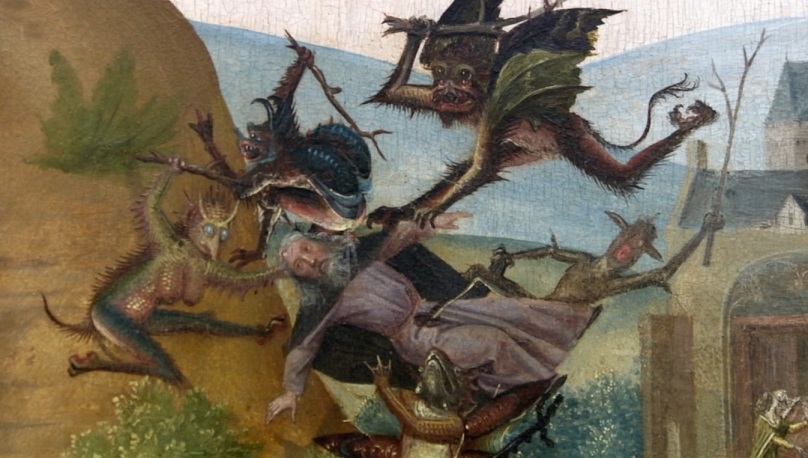
Fig.3. Detail from ‘Legend of the Holy Ermite Anthony‘(c.1410-1440) by Meister der Heiligen Sippe der Ältere
Hans Bellmer
In Sibylle’s work, the fusion occurs not only between the bodies of men and women, but also between human beings, objects and creatures of various types that resemble animals and demons, thus causing various types of permutations (figure 5 to 14). These permutations resemble those of her fellow countryman Hans Bellmer (figure 15 to 17). In both their works, it is possible to notice that the bodies are represented as if they were labyrinths, as their distorted forms break with any notion of hierarchy from the moment their structures manifest themselves as a catastrophe, in which the excess acquires ramifications in a process of endless play.
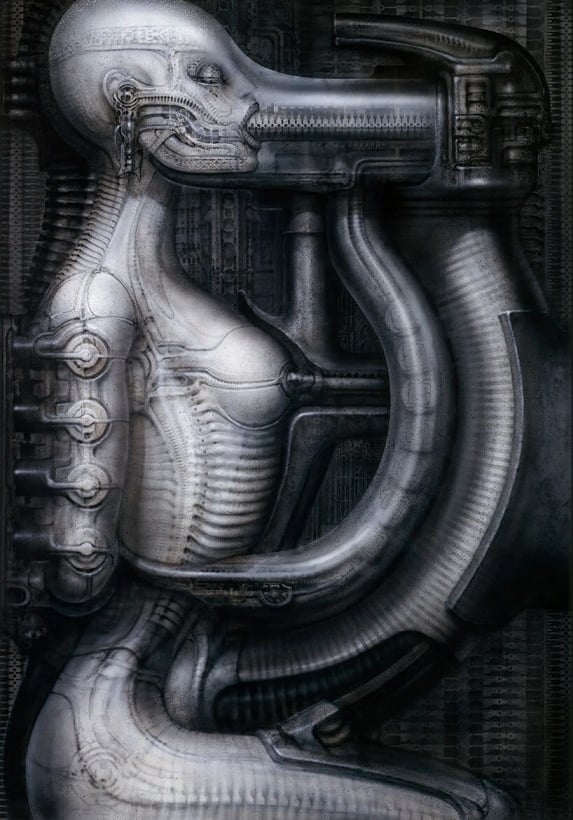
Fig.4. Painting by HR Giger
Anagrammatic Body
In this sense, Sibylle seems to strictly follow the principle of the anagrammatic body, which Bellmer explains: “to have a distinct and precise view, we can say: the body is comparable to a sentence that would invite us to disarticulate it, to recompose, through an endless series of anagrams, its true contents”. The anagram serves to exemplify his proposal of an insubordinate, interchangeable body, as new meanings can be extracted similarly to what happens with the words of a poem, whose structure becomes reversible, multiple and indeterminate, since the same letters that make up one verse become the others, as we can see in this writing by Hans Bellmer and Nora Mitrani.
ROSES AU CŒUR VIOLET
Se vouer à toi, ô cruel
A toi, couleuvre rose
O, vouloir être cause
Couvre-toi, la rue ose
Ouvre-toi, ô la sucrée
Va, où surréel côtoie,
O, l’oiseau crève-tour!
Vil os écœura route,
Cœur violé osa tuer.
Sœur à voile courte – écolier vous a outré
Curé, ou Eros t’a violé – ou l’écu osera te voir
Où verte coloriée sua – cou ouvert sera loi
O rire sous le couteau
Roses au cœur violet.
Translated literally:
ROSES WITH A PURPLE HEART
To you, O cruel one
To you, pink snake
O, to want to be the cause
Cover yourself, the street dares
Open yourself, O sweet one
Go, where the surreal rubs shoulders,
O, the bird that breaks the tower!
Vile bone will disgust road,
Raped heart dared to kill.
Sister with short sail – schoolboy outraged you
Priest, or Eros raped you – or the shield will dare to see you
Where green colored sua – opened neck will be law
O laugh under the knife
Roses with purple heart.
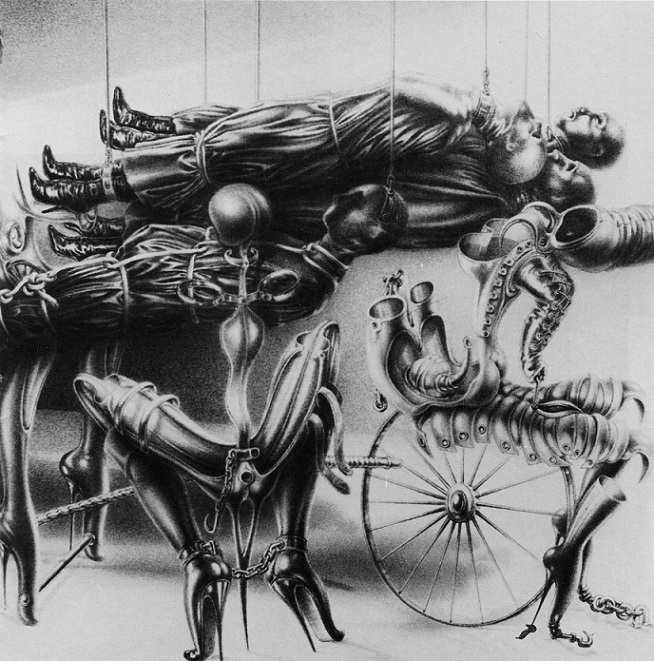
Fig.5. ‘The Recumbant‘ (1976)
Monstrous
Thus, in Sibylle’s and Bellmer’s images, there is no way of knowing where bodies begin and end because, like an anagram, they decompose, unfold, until their identities are torn apart (Fig.17 to 24). The shapes become oscillating, monstrous, as what is left of the bodies repeats formless gestures while they are brought down to a critical state, from which conjunction and divergence establish discontinuity as a process of de-structuring the anatomy. This disruption is in all of Hans Bellmer's production, but becomes more evident in the drawings inspired by the work of the Marquis de Sade, which make up the series À Sade and Petit Traité de Morale, and by the short story Madame Edwarda. Similar to Bellmer, Sibylle also illustrated a book by the French writer, Philosophy in the Alcove (figure 25 to 31), and created prints based on Lautréamont's The Songs of Maldoror (figures 32 and 33).
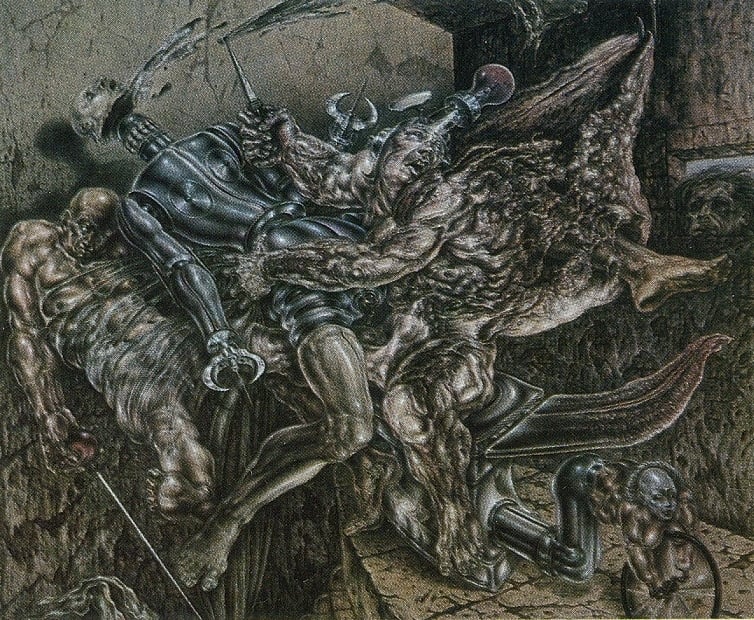
Fig.6. Le Voyeur
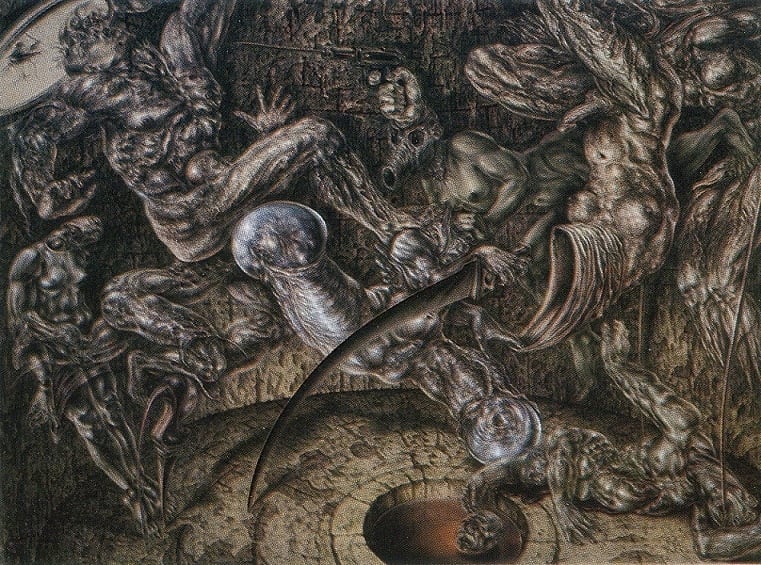
Fig.7. Au delà de lames
Orgy of Form
In both works, the details of non-existent anatomies appear as practices subversive of any attempt at classification, so that the junction between male and female is established as an orgy of form. In this orgy, there is no reason to separate victims and perpetrators, as the boundaries between them no longer exist. Even pain and pleasure become difficult to differentiate and recognize in these drawings, since Sibylle's creatures, with few exceptions, no longer have a human face onto which spectators can project themselves. But how could they do this, if the images conceived by Sibylle Ruppert are the intertwining of what is recognizable with what escapes any attempt at definition by us? Like Georges Bataille's formless entry, the images created by Sibylle are designed to make the uncertain spread everywhere (figure 34 to 46). Hence the disorientation, the impossibility of defining its limits, since the body becomes a space of loss, where the self in it gets lost when reaching the other.
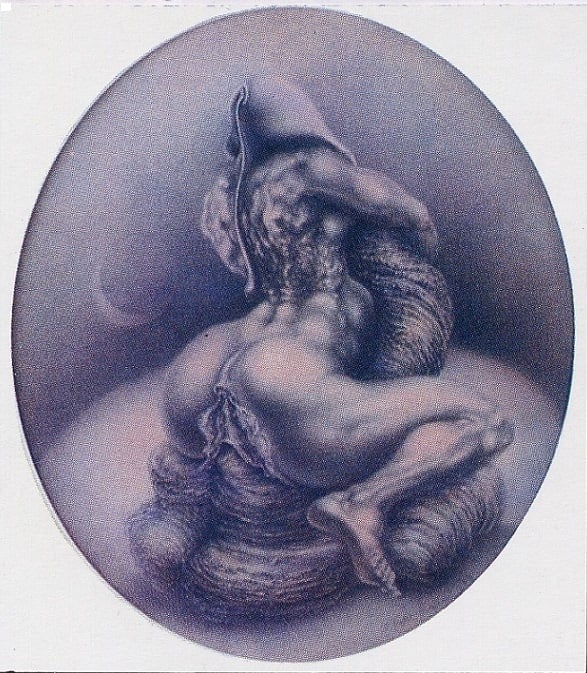
Fig.8.

Fig.9.
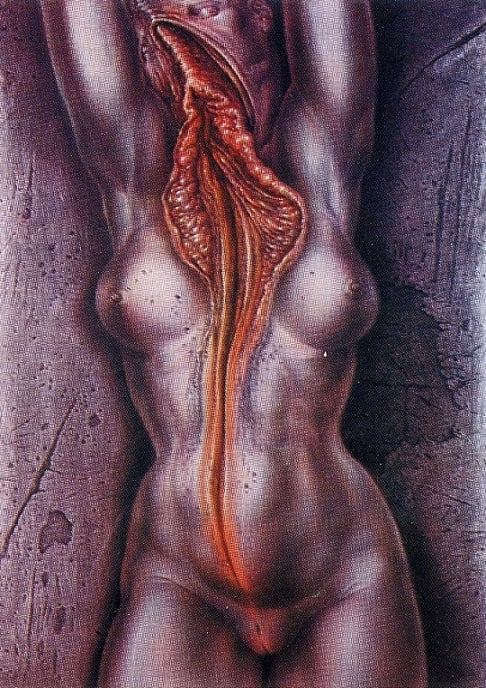
Fig.10.
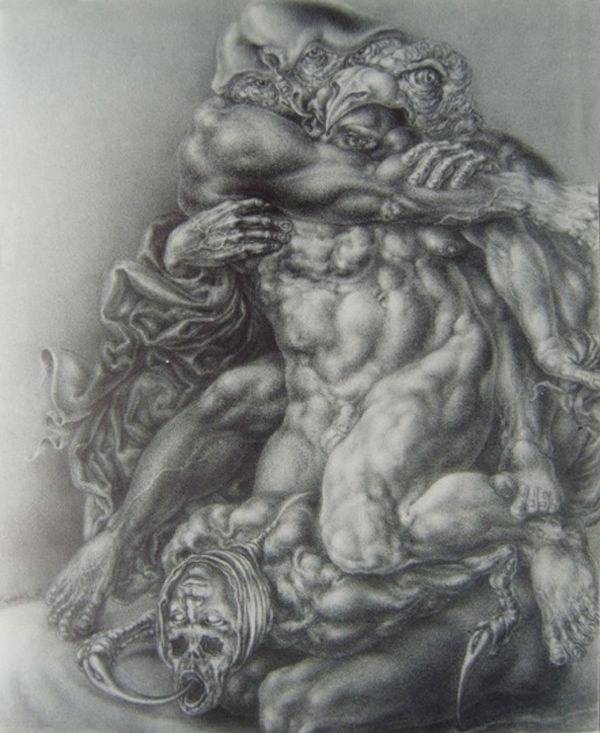
Fig.11.
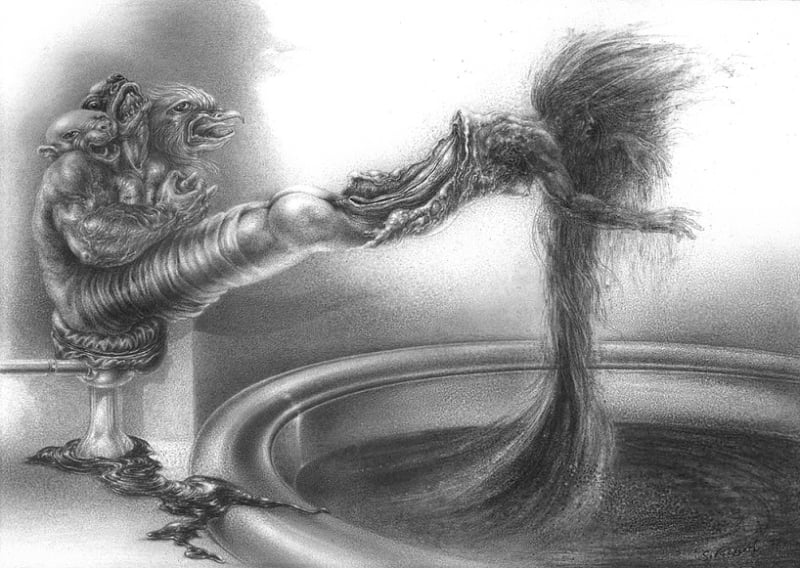
Fig.12.
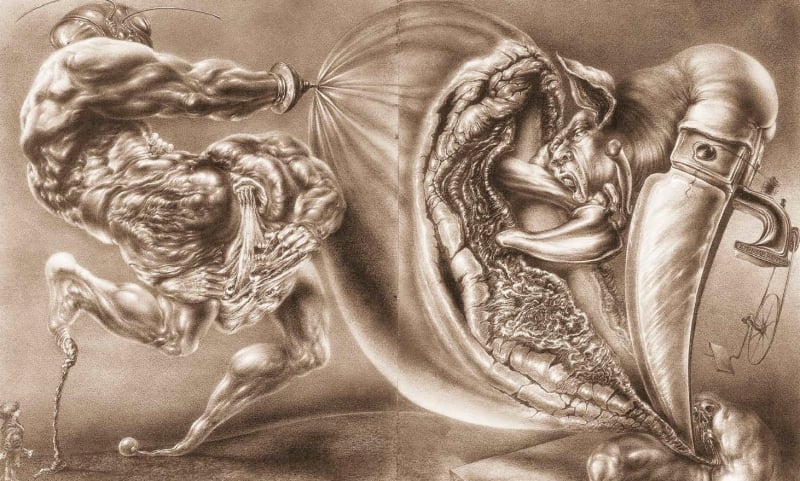
Fig.13. Empusae Raptus (1977)

Fig.13a
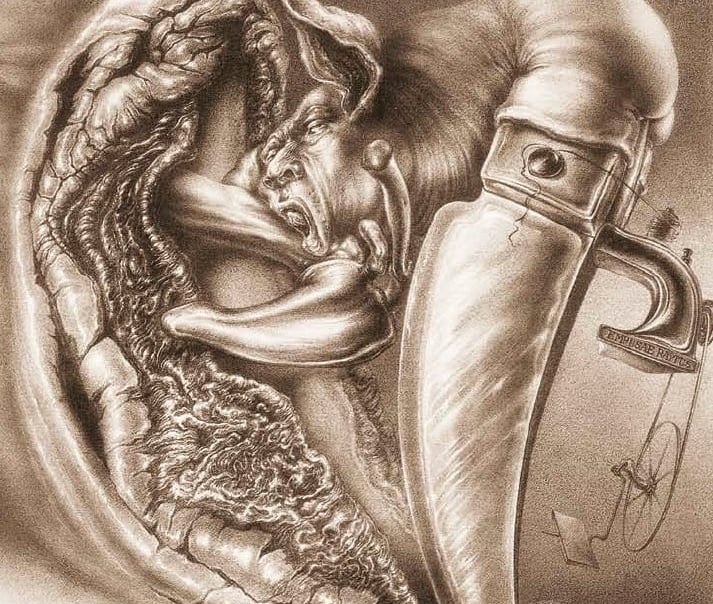
Fig.13b
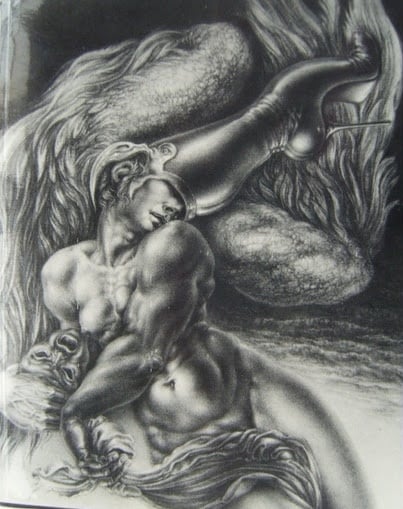
Fig.14.
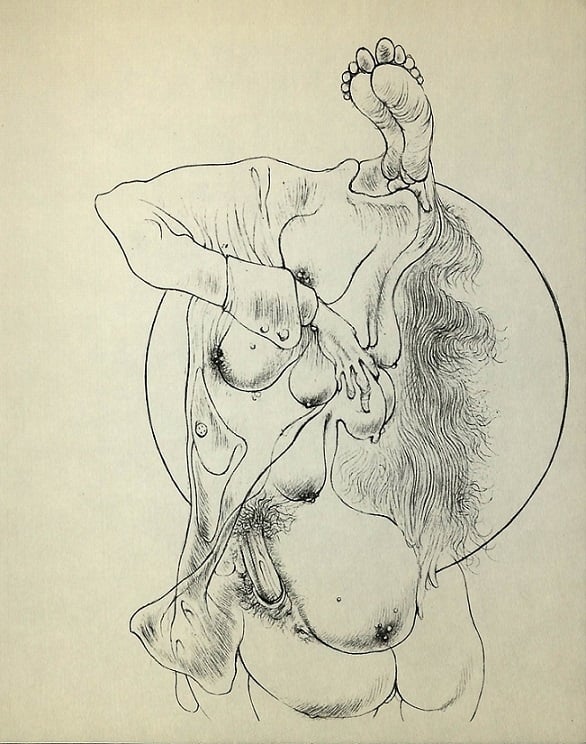
Fig.15. Drawing by Hans Bellmer
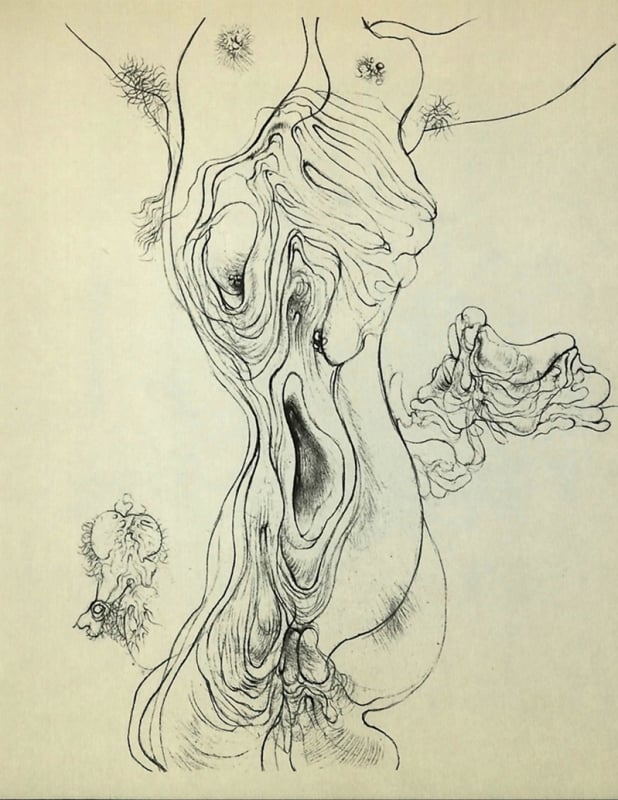
Fig.16. Drawing by Hans Bellmer
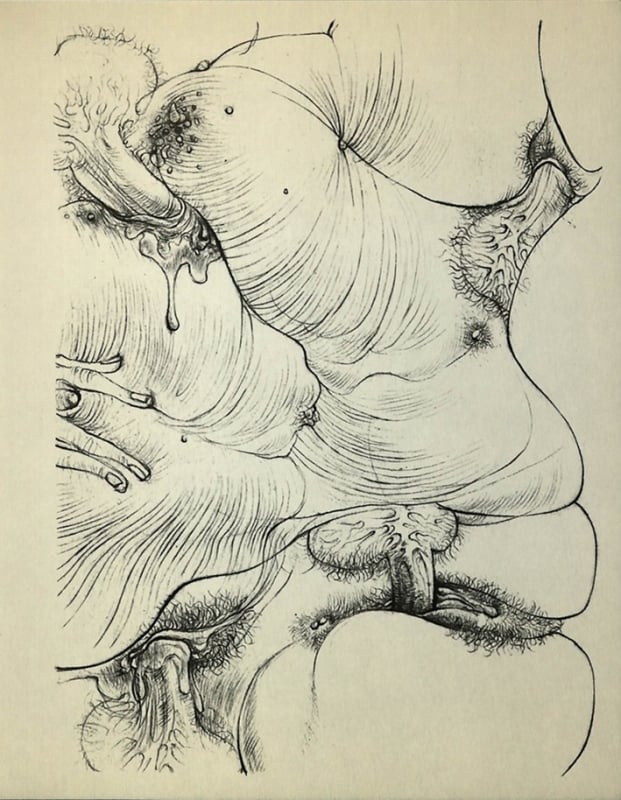
Fig.17. Drawing by Hans Bellmer
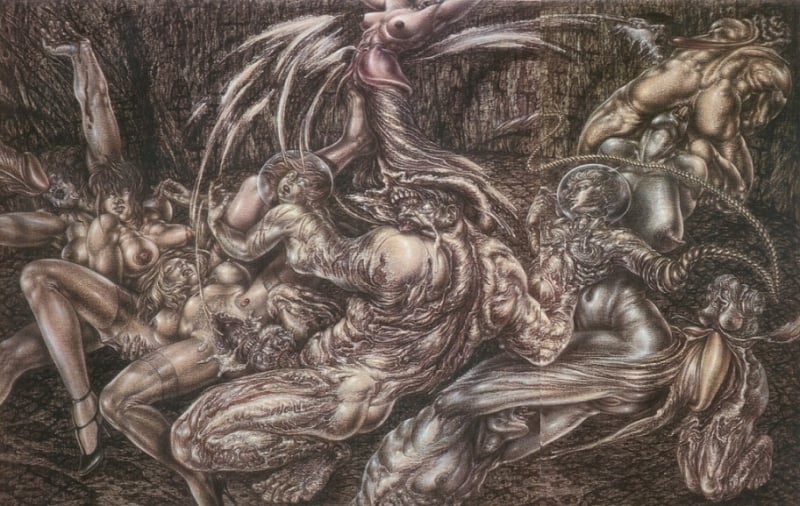
Fig.18. Hommage à KS
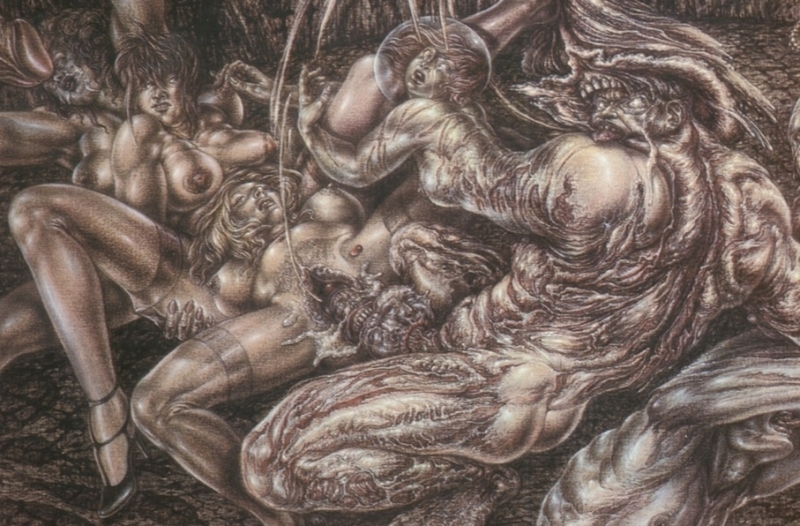
Fig.18a Detail
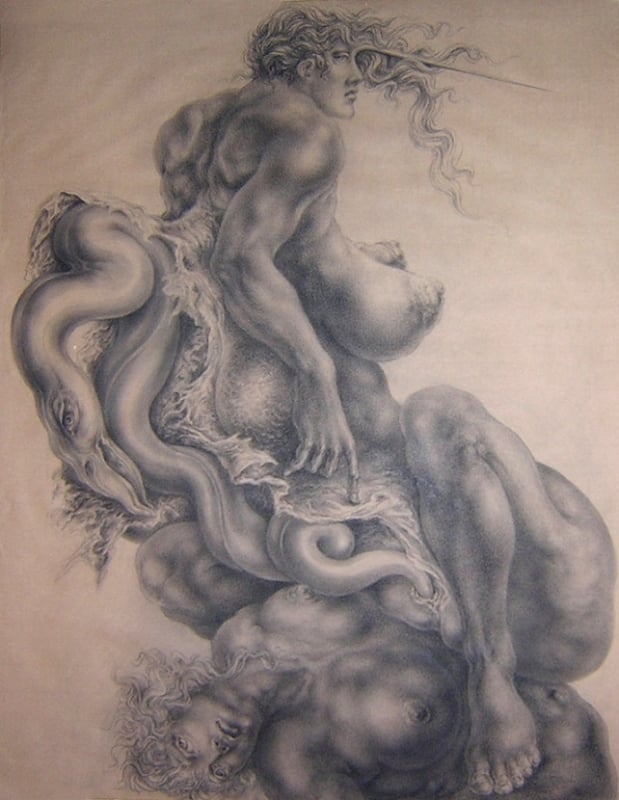
Fig.19.
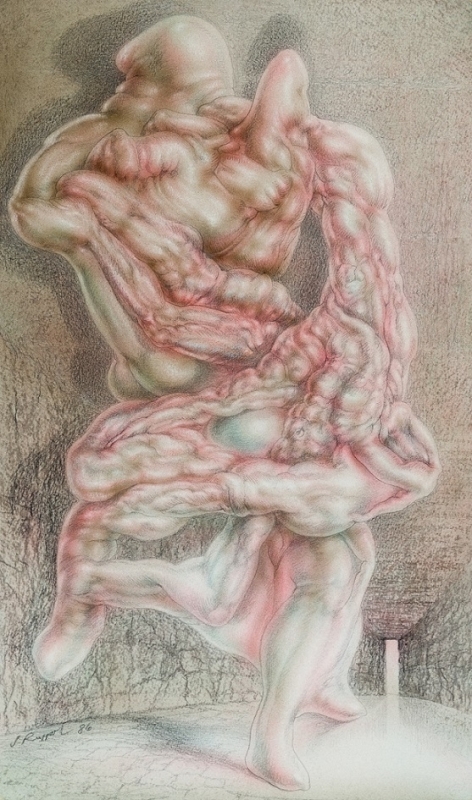
Fig.20.
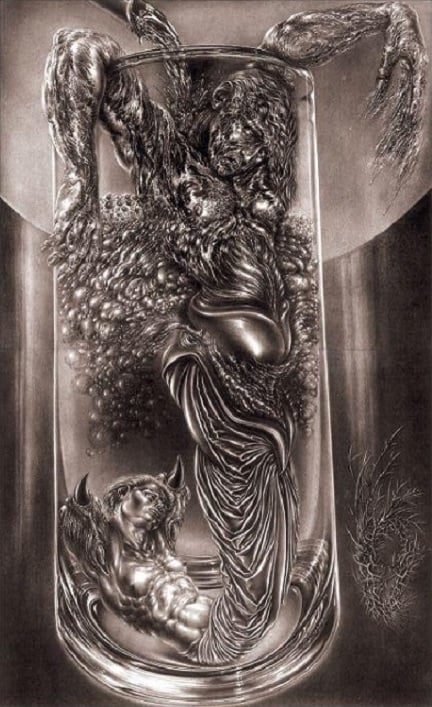
Fig.21. I Crush the Glowworm (1979)
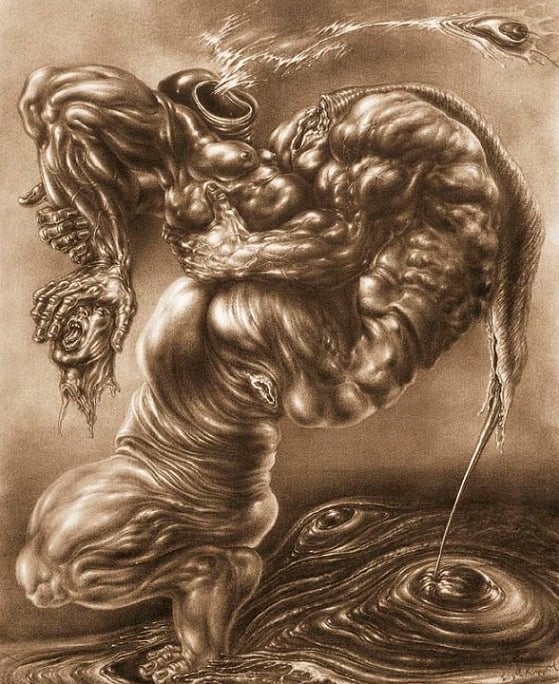
Fig.22. The Spectacle of the Universe (1977)
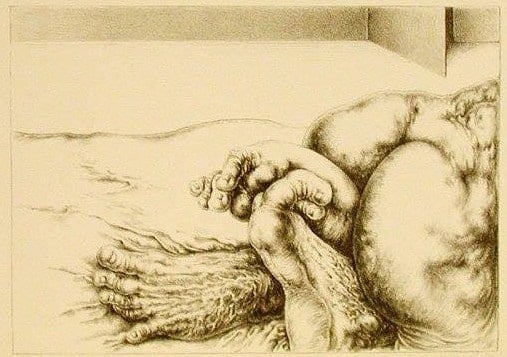
Fig.23.
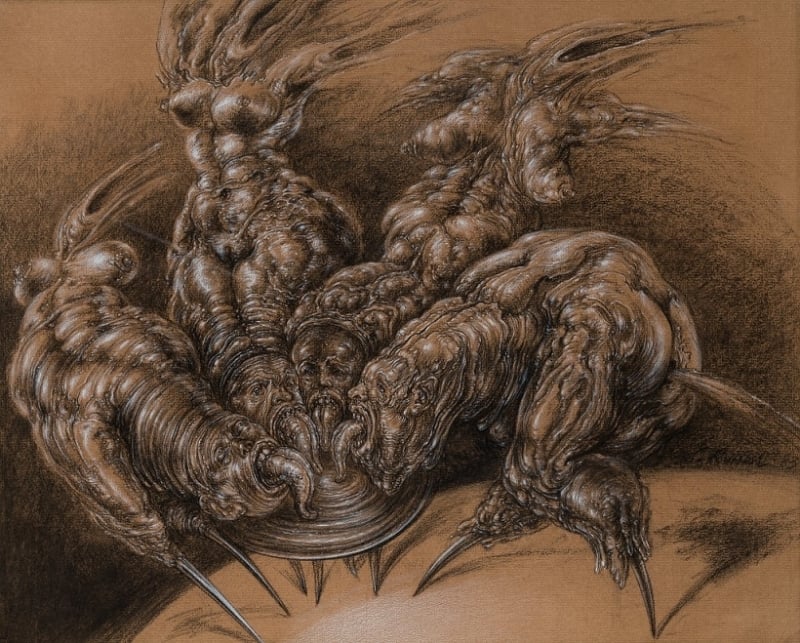
Fig.24.

Fig.25.
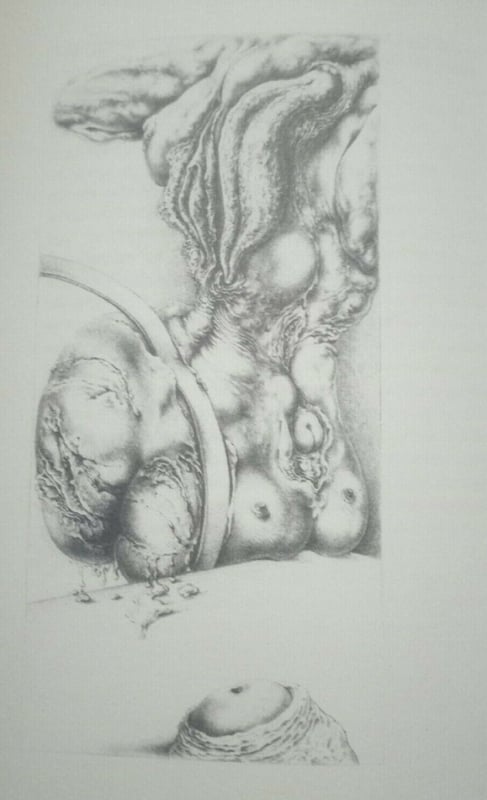
Fig.26.
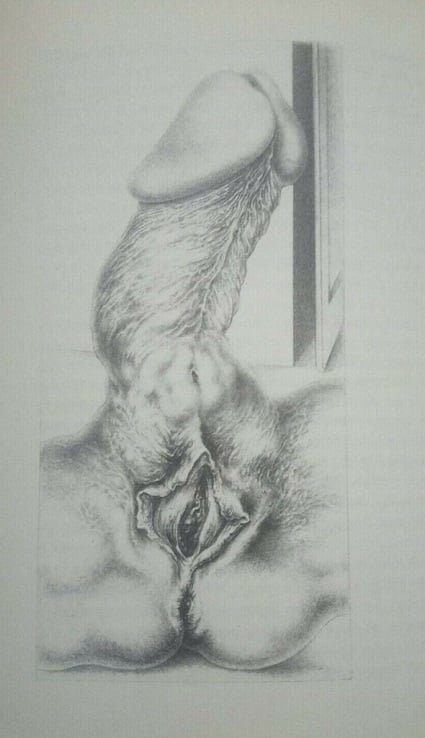
Fig.27.
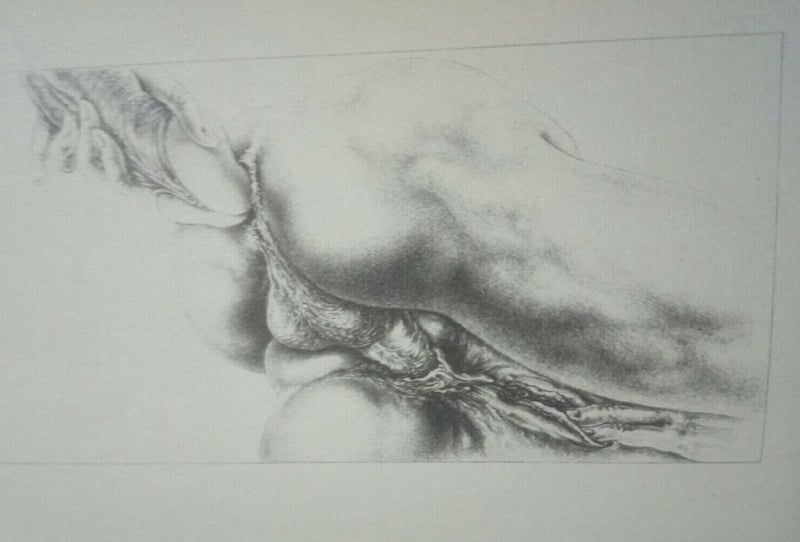
Fig.28.
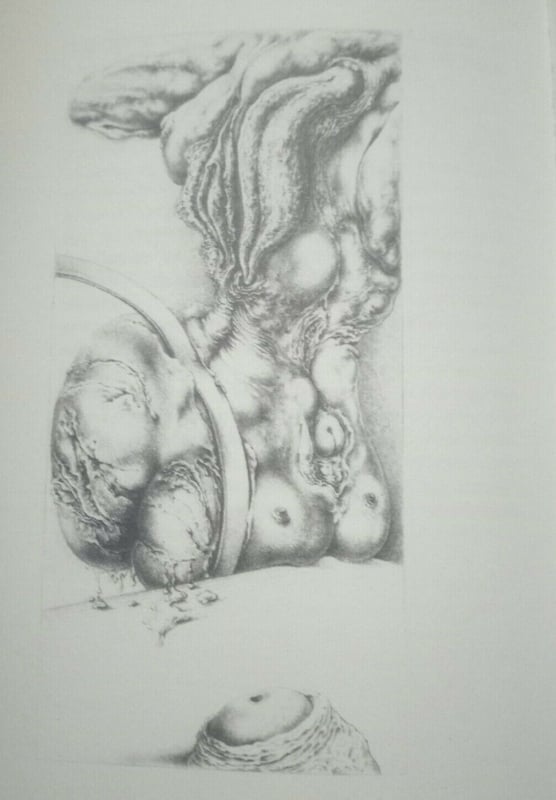
Fig.29.
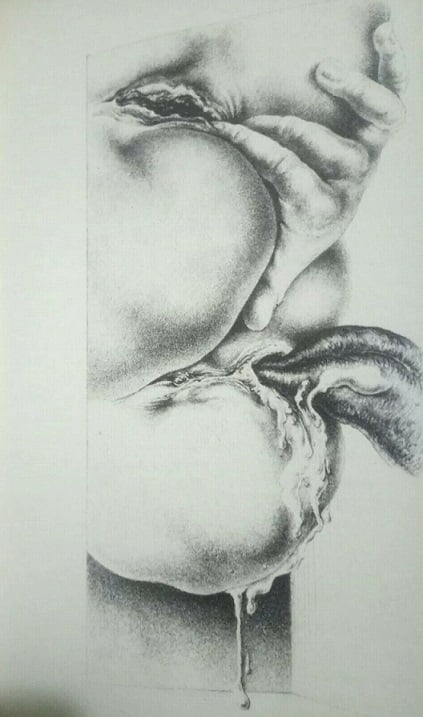
Fig.30.
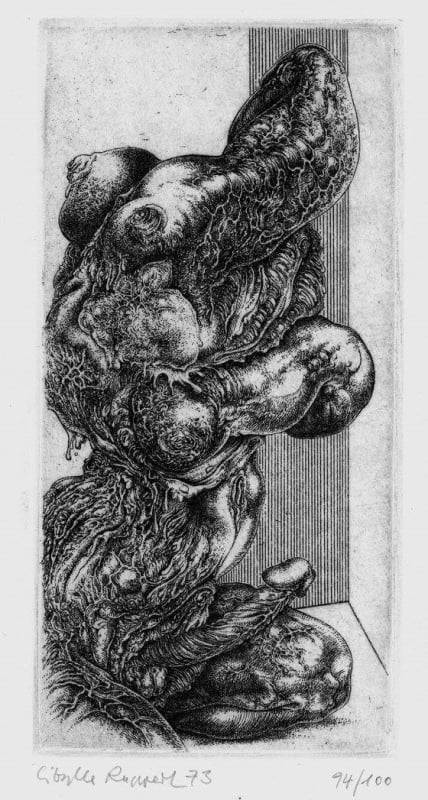
Fig.31.
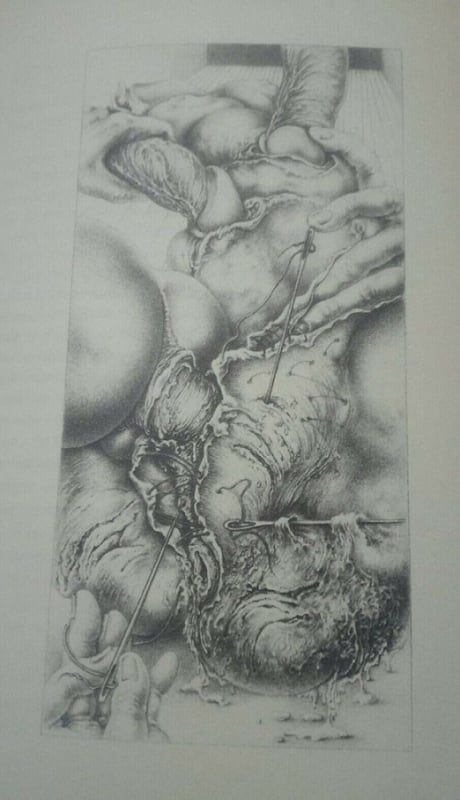
Fig.32.
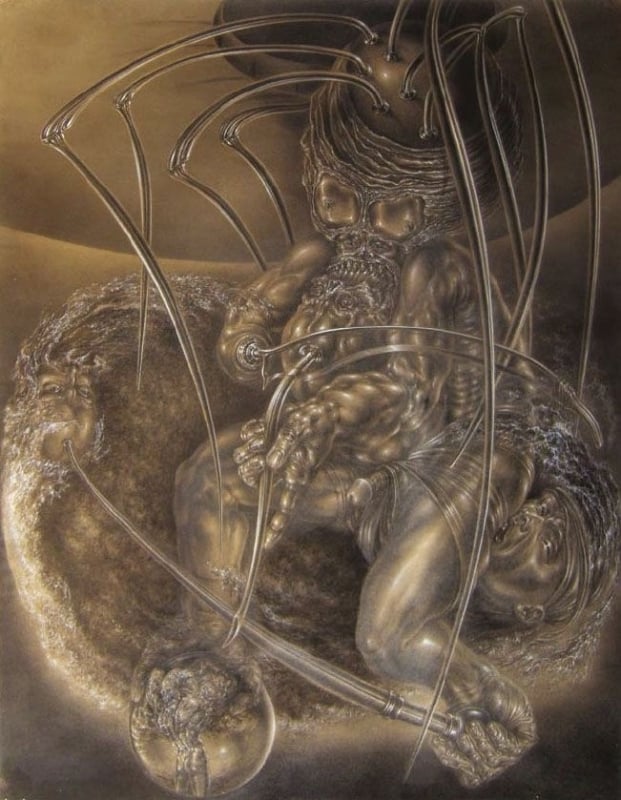
Fig.33. Le Chant de Maldoror (1978)
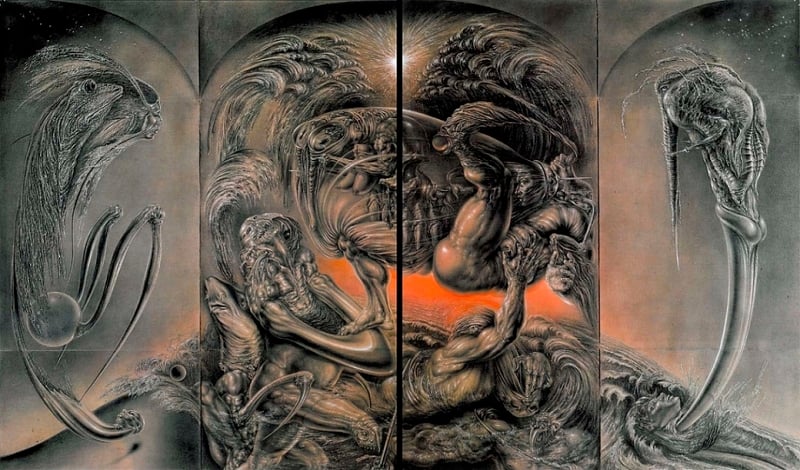
Fig.34. La Bible du Mal (1978)
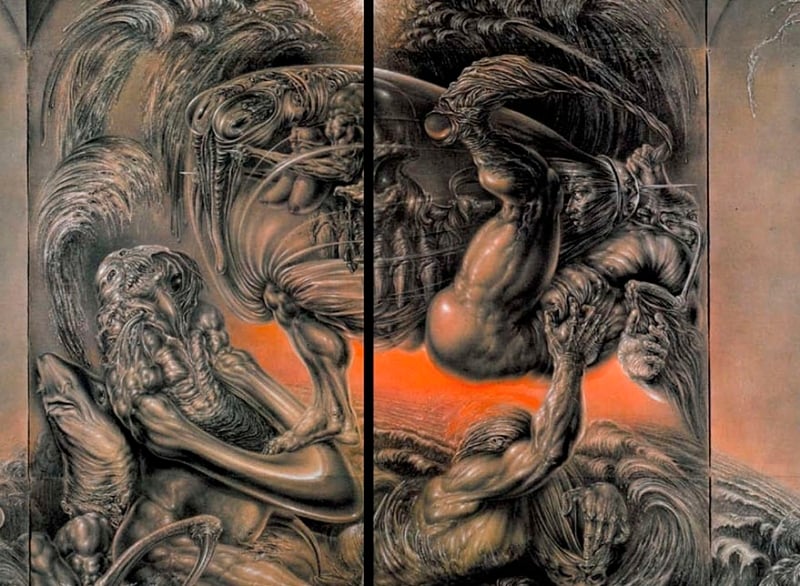
Fig.34a

Fig.35.

Fig.36.
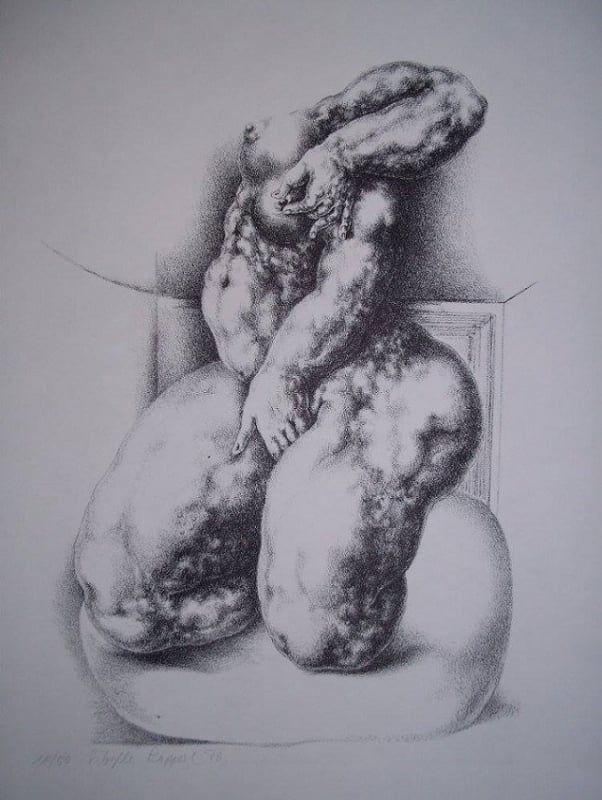
Fig.37.
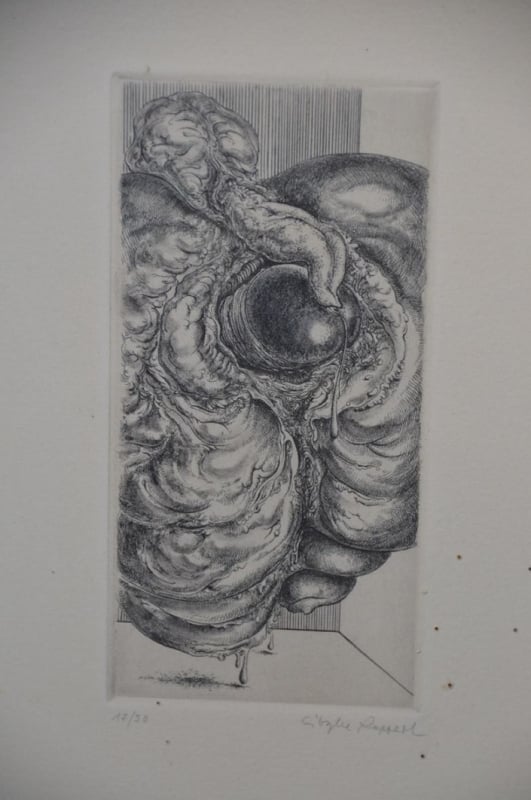
Fig.38.
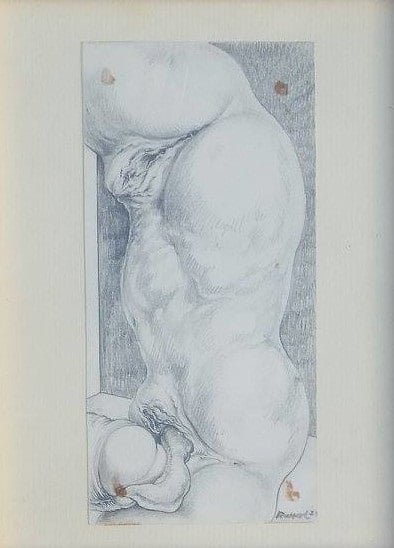
Fig.39.
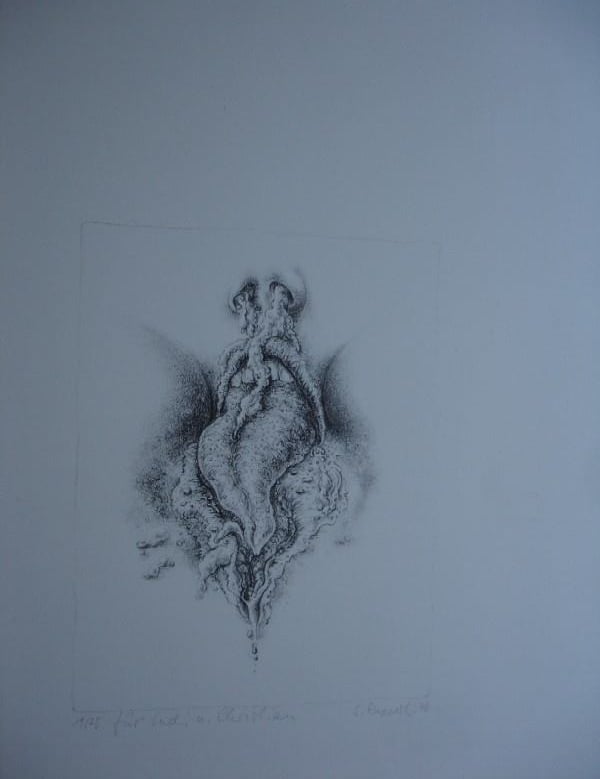
Fig.40.

Fig.41.
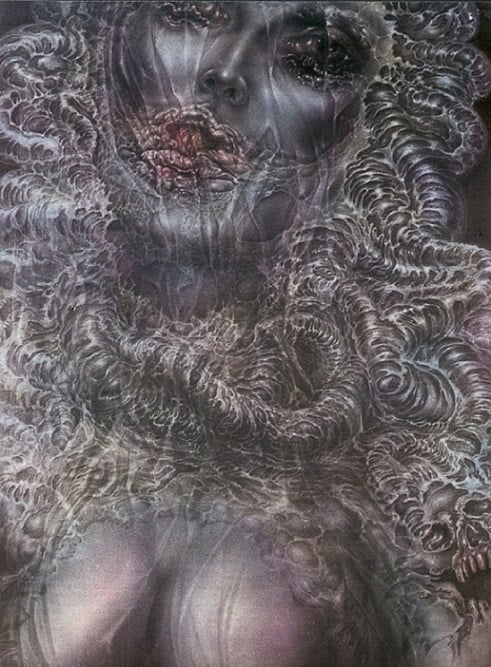
Fig.42. La Décadence
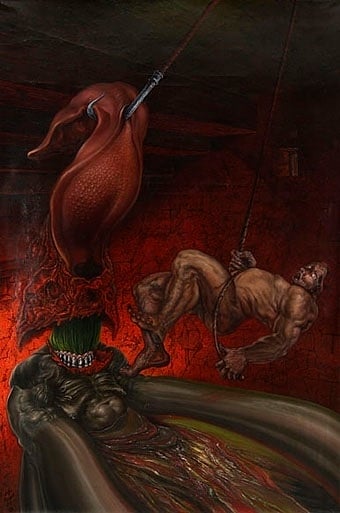
Fig.43.
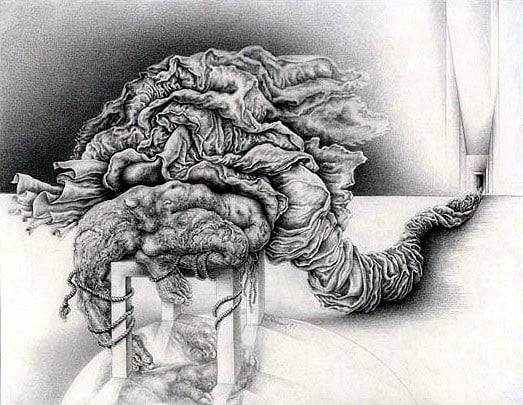
Fig.44.
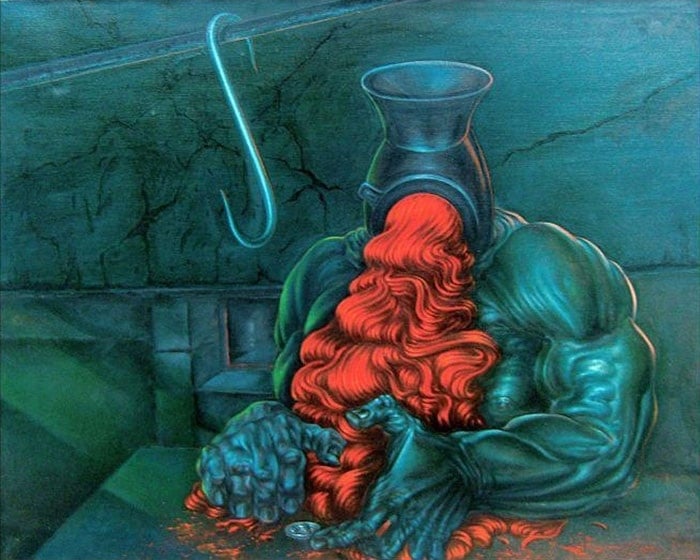
Fig.45.
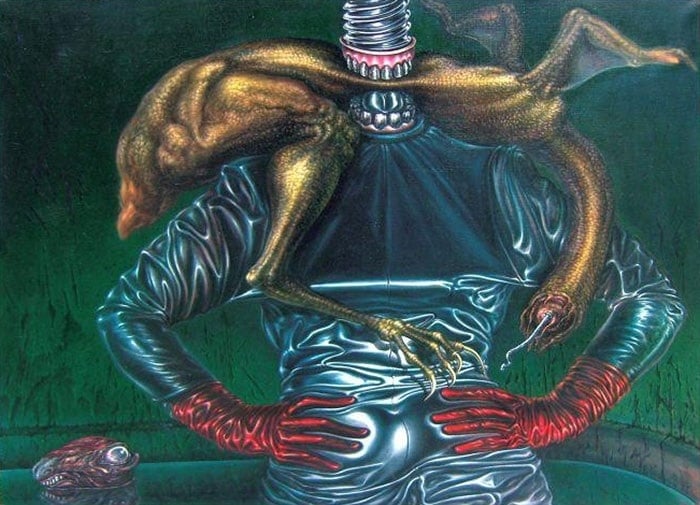
Fig.46. Le Sacrifice (1980)
Click HERE for the biomechanical obscenity in the work of H.R. Giger
Let us know your thought on the art of Sibylle Ruppert in the comment box below!
